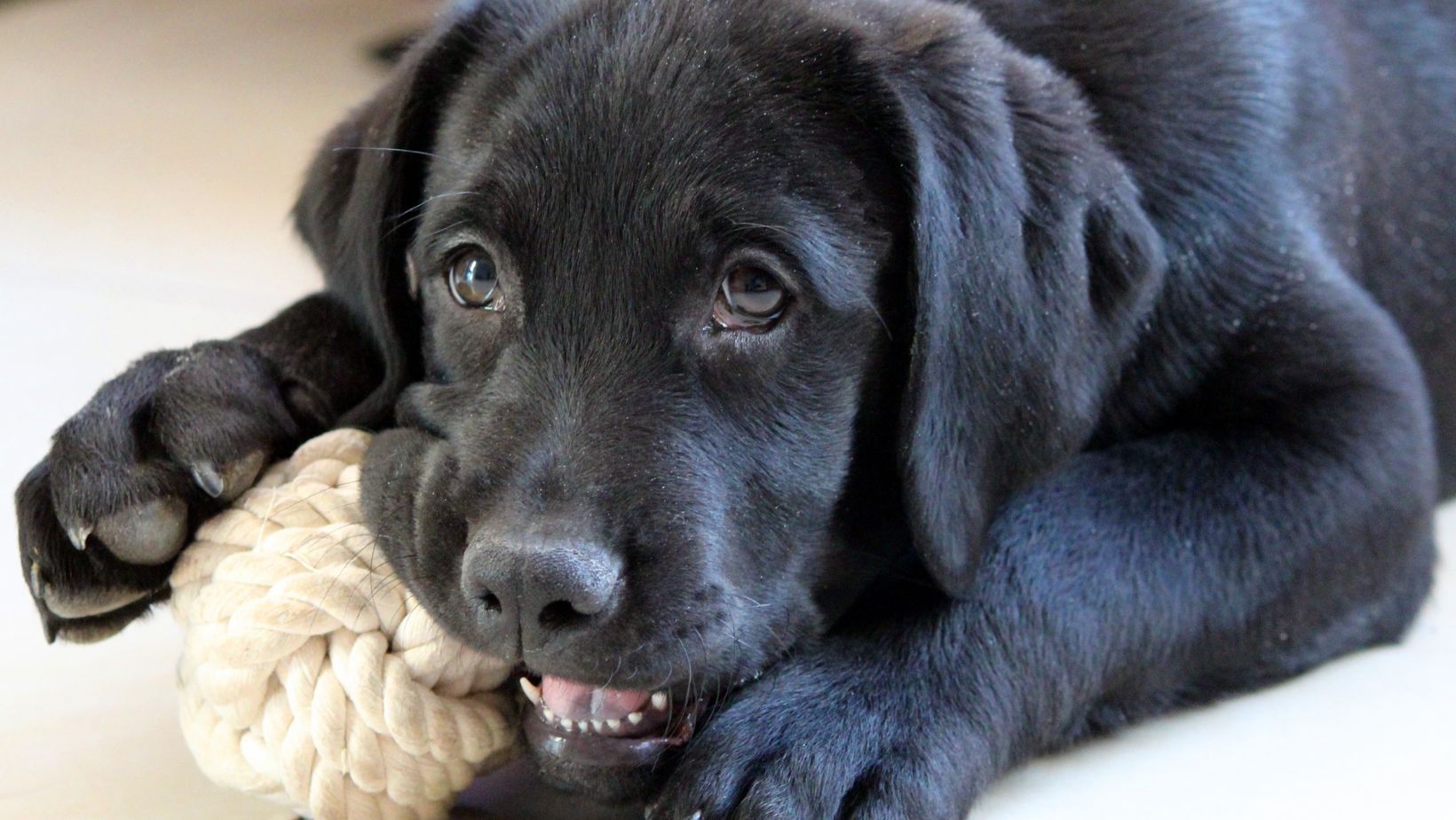Are you struggling to keep your furry friend from turning your favorite pair of shoes into a chew toy? Well, you’re not alone. Many dog owners face the challenge of dealing with their pets’ chewing behavior. But fear not because I’m here to help! In this article, I’ll share some effective strategies that will teach you how to stop your dog from chewing on everything in sight.
Chewing is a natural instinct for dogs. It helps them explore their environment and relieve stress or anxiety. However, when their chewing habit extends to your belongings, it can become quite frustrating. The first step in resolving this issue is understanding why your dog is chewing in the first place. Is it out of boredom, teething, or separation anxiety? Once you identify the underlying cause, you can tailor your approach accordingly.
One essential strategy is providing appropriate chew toys for your dog. By offering them an appealing alternative to chew on, such as durable rubber toys or bones specifically designed for dogs, you can redirect their attention away from destructive behaviors. Additionally, engaging in regular play and exercise sessions with your pup will help burn off excess energy and reduce the likelihood of them resorting to chewing as a means of entertainment.
How to Get Your Dog to Stop Chewing
Common Causes of Dog Chewing
One of the first steps in stopping your dog from chewing is to understand why they engage in this behavior. Dogs chew for various reasons, and it’s important to identify the underlying cause to address the issue effectively. Some common causes of dog chewing include:
- Teething: Puppies, just like human babies, go through a teething phase where their gums are sore and itchy. Chewing helps alleviate discomfort during this period.
- Boredom: Dogs that lack mental stimulation or physical exercise may resort to chewing as a way to entertain themselves. This is especially true for active breeds that require plenty of daily exercise.
- Anxiety or Stress: Dogs may chew as a coping mechanism when they feel anxious or stressed. It can provide them with a sense of relief and act as a distraction from their worries.
- Attention Seeking: Some dogs learn that chewing on furniture or personal belongings gets them attention from their owners, even if it’s negative attention. They may continue this behavior to get noticed.
Signs Your Dog May Have a Chewing Problem
It’s essential for pet owners to recognize the signs that their dog has developed a chewing problem. By being aware of these signals, you can intervene early and prevent further damage. Look out for the following signs:
- Damaged Items: If you find chewed-up shoes, furniture legs, or household items strewn around your home, it’s likely an indication that your dog has a chewing problem.
- Excessive Drooling: When dogs excessively drool while they’re not eating or drinking, it could be due to anxiety caused by an underlying chewing issue.
- Redness or Swelling: Check your dog’s gums and mouth regularly for any signs of redness or swelling, which could be caused by excessive biting and gnawing.
- Behavioral Changes: If your dog becomes more withdrawn, restless, or exhibits signs of stress when left alone, it may be a result of their chewing problem.

Creating a Safe and Stimulating Environment for Your Dog
Creating a Dog-Friendly Space
When it comes to preventing your dog from chewing on inappropriate items, creating a dog-friendly space is crucial. By setting up an environment that caters to your furry friend’s needs, you can significantly reduce the chances of destructive chewing. Here are some key points to consider:
- Secure the area: Make sure the designated space is safe and secure, free from any potential hazards or objects that could tempt your dog to chew. Remove toxic plants, electrical cords, and small objects that may pose a choking hazard.
- Provide comfortable bedding: Dogs need their own cozy spot where they can relax and rest. Invest in a comfortable bed or crate pad that matches your pet’s size and breed requirements.
- Designate play zones: Set aside specific areas for playtime, both indoors and outdoors. This will help channel your dog’s energy into appropriate activities instead of resorting to destructive chewing out of boredom.
In conclusion, patience and consistency are key when addressing any unwanted behavior in dogs. With time and proper training techniques, you can effectively stop your dog from chewing on inappropriate items.